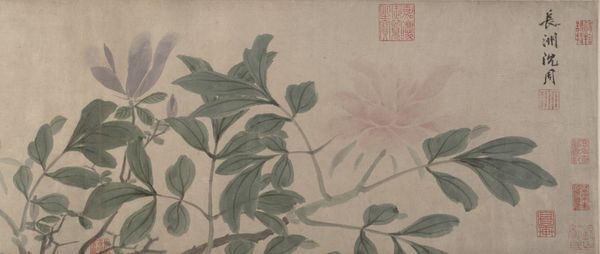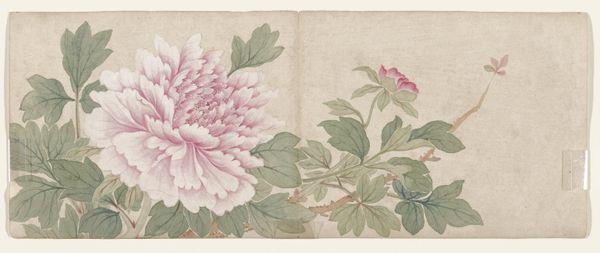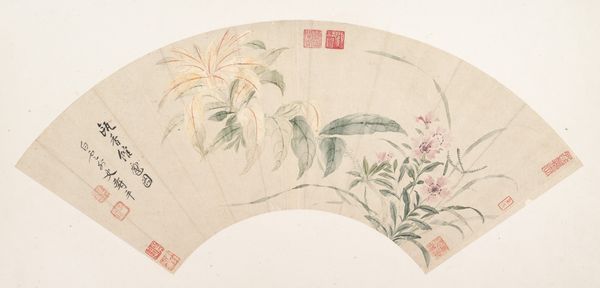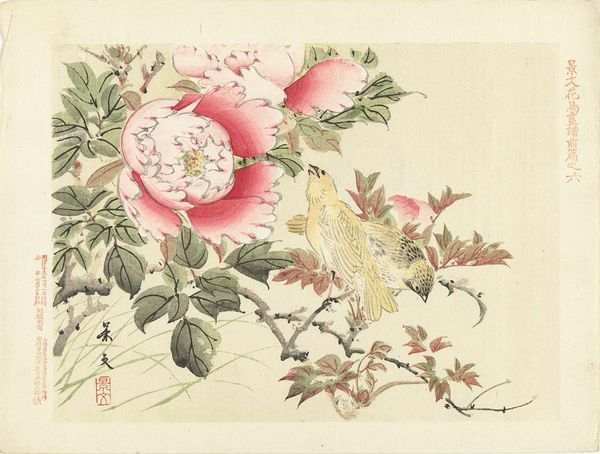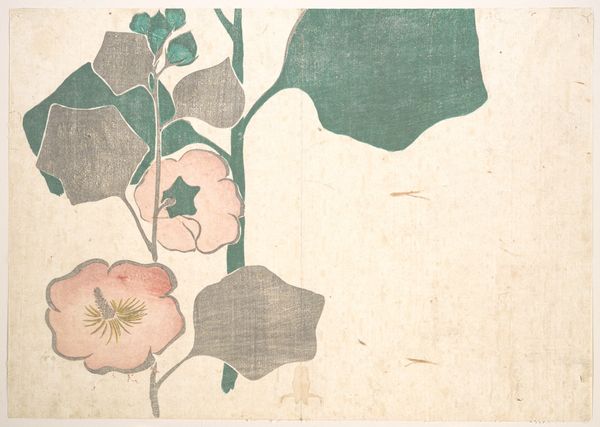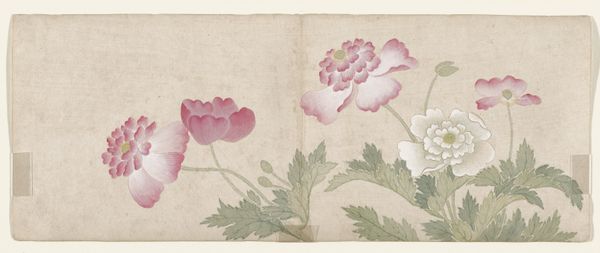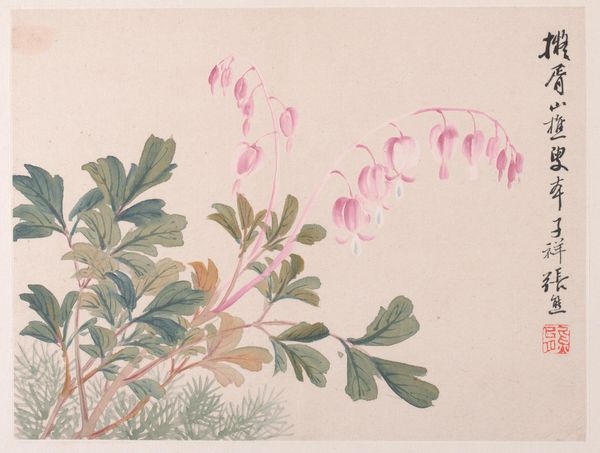
tempera, painting, paper, watercolor, ink
#
water colours
#
tempera
#
ink paper printed
#
painting
#
asian-art
#
landscape
#
paper
#
watercolor
#
ink
#
china
#
watercolour illustration
#
botanical art
#
watercolor
Dimensions: 5 1/2 x 14 3/16 in. (13.97 x 36.04 cm)
Copyright: Public Domain
Editor: We’re looking at “Flower Painting” by Mianyi, probably from the late 18th century. It’s an ink and watercolor piece on paper and it strikes me as both delicate and a bit… empty? It feels like it's hinting at a larger scene, but leaves it just out of view. What do you see in this work? Curator: Empty isn’t quite the word I’d use, but I agree that it evokes a sense of spaciousness. I like to think of this kind of piece as a quiet meditation, not necessarily incomplete. Chinese art, particularly landscape and botanical studies, often invites a more active participation from the viewer, to complete the scene within their mind's eye. Think of it less as a photographic representation and more like a haiku; do you see that at all? Editor: I think I see what you mean! Like it's giving you enough information to start creating your own story. Curator: Exactly! The washes of color, that seemingly simple composition...it's all incredibly deliberate. How does the contrast between the green foliage and the splash of red further shape your impression? Editor: I notice that it draws my eye. I guess that creates some depth and highlights how carefully Mianyi arranged the flora. Before, I only looked at the large picture. Curator: Right! The red becomes a focal point but also balances with the more subdued tones of the surrounding green. You know, sometimes art is about what *isn't* there just as much as what *is*. Editor: That’s a cool thought! I’ll definitely look at other works from that period differently now. Curator: Wonderful. Never stop seeking that personal connection – that's where the true magic lies.
Comments
minneapolisinstituteofart about 2 years ago
⋮
These delicate flower studies were painted by Mianyi , an imperial prince who lived in Beijing during the late eighteenth and early nineteenth centuries. The four double leaves originally formed an album that was once in the imperial collection. The frontispiece, in fact, bears the seal of the Jia Jing emperor who reigned from 1796 to 1821. Like most of the educated elite, Mianyi was well versed in classical literature, music, and calligraphy, but he excelled at painting and is best known for his flower studies, The use of color (versus ink), interest in descriptive detail, and facile technique are typical not only of Prince Chen, but of Chinese court taste in general during the eighteenth century. This album illustrates the type of amateur painting practiced among the court intelligentsia. Descriptive, technically accomplished and decorative, the aesthetic of these leaves are quite apart from the more cerebral ink landscapes of the literati tradition
Join the conversation
Join millions of artists and users on Artera today and experience the ultimate creative platform.
